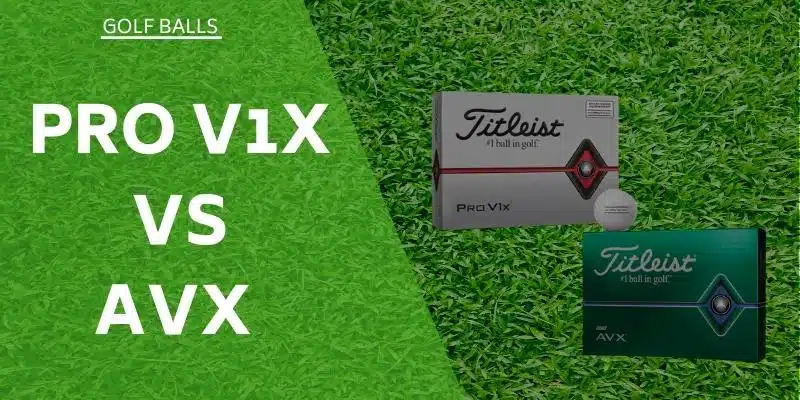No other ball in sport compares to the complexity of the golf ball. One mysterious question for your average golfer relates to the inside of golf balls.
What’s inside a golf ball? The center of a golf ball is made of injection-molded rubber, so it will compress when you hit it. Up to four layers of high-density rubber surround the core. Two-layer balls are good for beginners, and more layers can increase your control.
But as technology advances, golf balls are marching along with it, which can mean the center of a golf ball changes.
In this article, we’ll take a look at golf balls across time to see what constitutes them and how their make-ups can affect your game.
In Short: What’s Inside a Modern Golf Ball

The one-word answer to “What’s inside a golf ball?” is RUBBER. Yet, some balls also use different materials. The exact makeup of a golf ball will depend on several different factors, primarily how many “pieces” the golf ball has.
Most commonly, you’ll find that golf balls have these parts:
- Core: Usually constructed from injection-molded rubber to allow for ball compression.
- Layers: These can be made from a few different materials and go between the core and cover of the golf ball. There can be between 0-4 layers in modern golf balls, and they’re made from a different density rubber (including liquid) to the core and each other layer.
- Cover: The dimpled exterior of the ball we’re all familiar with.
Related Reading: Best Golf Balls for Average Players.
Types of Golf Balls
Today, you will find that most golf balls are classified based on the number of layers used in construction.
While many elements go into a golf ball’s design, the most commonly used to categorize balls include:
- Materials
- Technologies used to make the balls
- Unique constructions (how the elements are combined)
Here are more types of golf balls so you can better decide which is right for you.
One-Piece Balls
These are essentially golf balls that are designed from one type of material (commonly Surlyn). These types of balls are rare nowadays, especially with skilled golfers, but they can be a good fit for beginners and driving ranges as they are cheap to make. Although, we’d recommend buying bulk used balls instead of trying to find one-piece balls new.
Two-Piece Balls
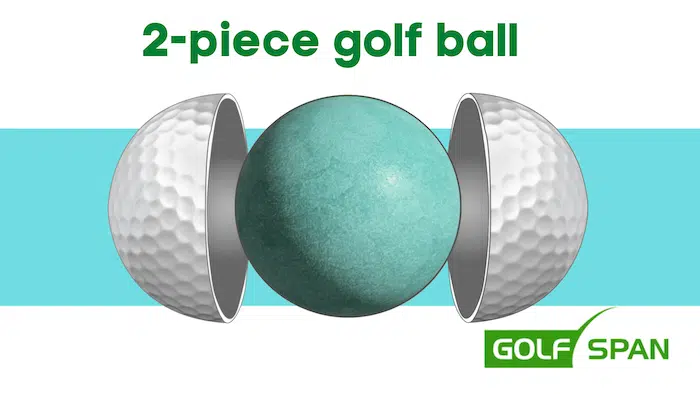
Two-piece golf balls have a single large core, usually made from injection-molded rubber, in the interior wrapped with urethane, Surelyn, or other ionomer covers. These are a good fit for a diverse range of players, but more advanced players may opt for balls with more layers for more control.
Our Favorite Two-Piece Ball:
Three-Piece Balls

For more advanced players, three-piece balls offer what is often considered the minimum threshold for the ideal golf ball. This may be why they are the most commonly used at the PGA tour.
Three-piece balls are softer than two-piece balls, allowing for more control around the greens and making it easier to hit draws and fades. Each layer is usually made from a different density rubber to the ball’s core and can even be a liquid.
Our Favorite Three-Piece Ball:
Four-Piece Balls
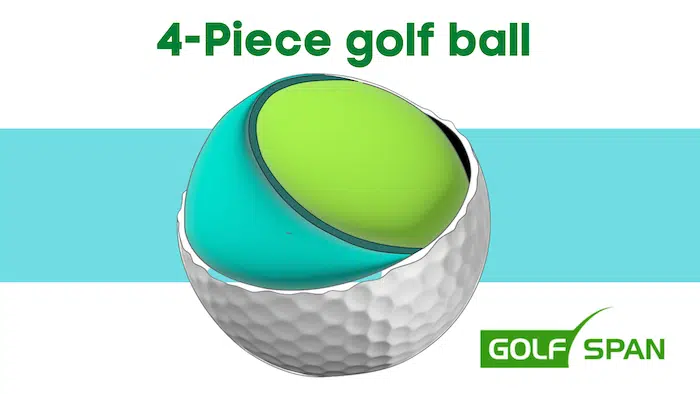
The extra layer on these balls serve the purpose of reducing spin. However, some players claim the extra layer doesn’t make much difference. So you should consider whether you need a premium ball like a four-piece ball.
Our Favorite Four-Piece Ball:
Five-Piece Balls

The thinking when it comes to using five-piece balls is similar to that of the four-piece ball. More layers equal more control. These types of balls are designed to suit players in search of an improved alternative to four-piece balls in terms of spin and ball speed.
Our Favorite Five-Piece Ball:
Six-Piece Balls
Six-piece balls are more rare and you may have a hard time finding them. An example of this is the MaxFli U/6 Tour golf ball. Although these are no longer made, there are likely to be newer six-piece balls on the market sooner or later.
Construction of a Golf Ball
It is amazing to see how much the golf ball has evolved, especially considering that the earliest recorded golf balls were made from asymmetrical pieces of wood.
While most have simple aesthetics, modern golf balls result from hundreds of years of innovation and technological changes to make the perfect accessory for improving a player’s game. This is evident not only in the exterior elements of golf balls but also in their interiors.
While earlier versions of the golf balls may have been made entirely of one solid material, progress saw the separation of the interior and exterior as different elements that are combined for maximum efficiency. Across different centuries what was in the interior and exterior varied.
A Short History of the Inside of Golf Balls
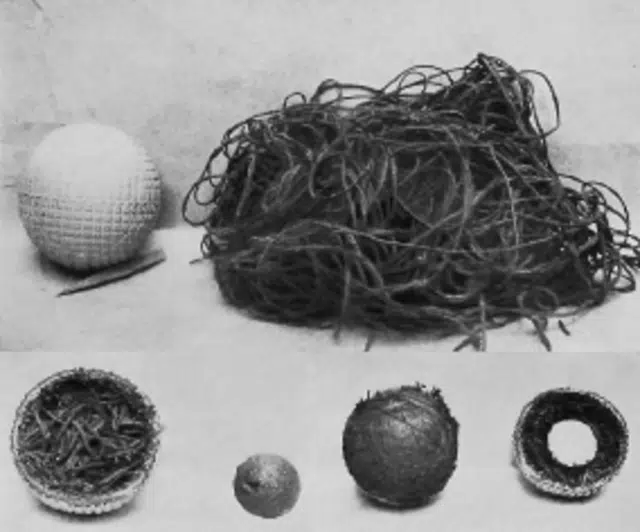
Wooden Golf balls
While evidence supporting the claim of wooden golf balls being the earliest is little, there is just enough of it to support the argument of 1400 golfers using wooden golf balls in the earliest games.
It is presumed that carpenters would curve out golf balls from hardwoods such as Boxroot and beech. The fact that these balls were not evenly balanced or perfect spheres made them largely inefficient. This coupled with the fact that they were not resistant to some weather conditions, pushed players to strive to find better solutions.
Leather Balls with Hair
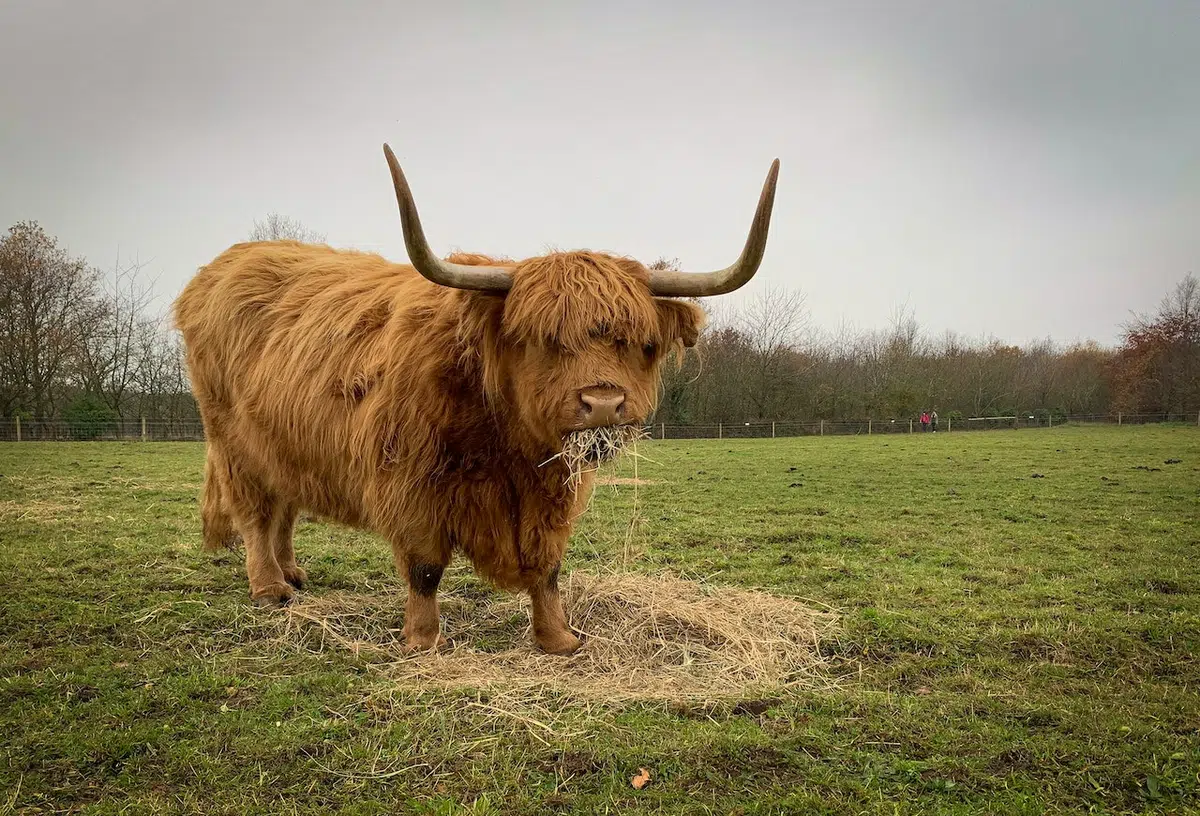
The leather balls were the immediate successor of the wooden balls. As the name suggests, they consisted of balls made from cowhide leather exteriors, with the interiors being filled with straw or cow hair. You could consider this the first separation of the interior and exterior as different components of the golf ball.
While they were certainly an upgrade from wooden balls, these balls still had a lot of inefficiencies. One major problem with them was their inability to resist water damage.
The ‘Featherie’
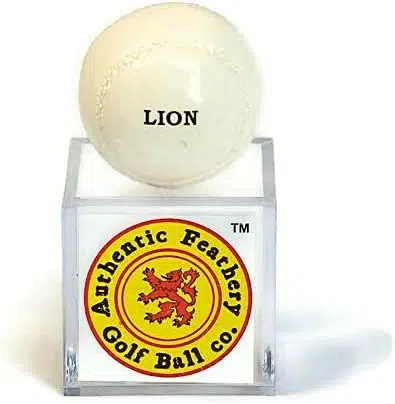
The Featherie was a golf ball made in the 1700s that incorporated goose feathers for the interior. Both the feathers and leather were wet as the manufacturing process took place. This meant that the feathers would expand to fill the balls’ interiors once dried, and the outer leather covering would contract to create tight, compact fill results.
All these new developments meant that the Featherie had improved ball flight characteristics compared to previous balls. This is why the balls lasted a few centuries before golfers replaced them with the Gutta balls.
However, even the Featherie had its weaknesses. One, the ball failed to get over the water problem. If they got wet, the balls would get damaged.
Another problem is that the process of making the ball was very difficult, and only a small set of experts could make the balls. This resulted in the balls being very expensive when they were first released into the market.
Gutta Percha Golf Balls
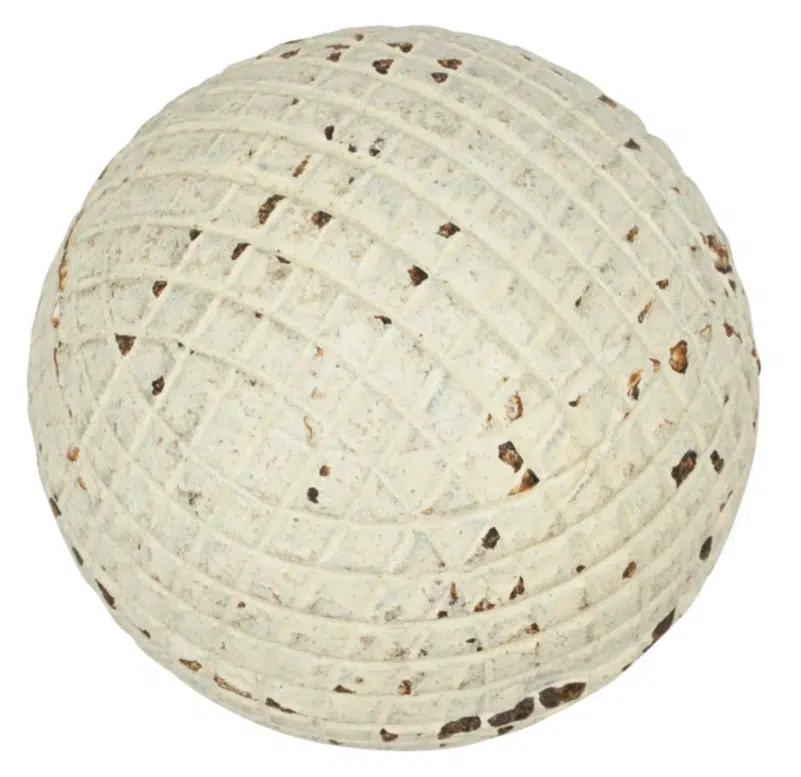
Image: 1st Dibs Collectibles
Created in the 1800s, the ‘guttie’ was the first mass-manufactured golf ball in the world. The reason for this is it was easier and cheaper to make.
The balls were made of a type of gum called Gutta Percha. The most famous story is that a divinity student at St. Andrews was the originator of using the material to make golf balls. He did this after receiving a package from Singapore packed in the gum resin. He would go on to experiment with the gum in making golf balls but was unsuccessful in creating a usable product. In fact, his brother would finally succeed in creating an acceptable test product.
Initially, the ball was hit into a round shape while still hot. However, after a few years of innovation, manufacturers finally settled on using metal presses to make the balls more accessible.
The ball had better flight qualities, was more resistant to weather changes, and was way more affordable. Even better, players noticed that marking the ball made the balls perform better, which led to the addition of a Bramble pattern design to the balls.
Haskell Golf Ball
The wound golf ball was the next innovation in the history of golf balls. While waiting for a friend of his on the golf course, Coburn Haskell randomly wound up a rubber band around a golf ball and bounced it. Through this action, he noticed doing so actually made the ball bounce higher. Records show that later additions of a balata sap cover to his discovery would go on to pioneer the entire wound-up golf ball century.
Additions such as dimples further progressed the wound-up golf ball, paving the way to the modern-day golf ball.
The Modern Golf Ball
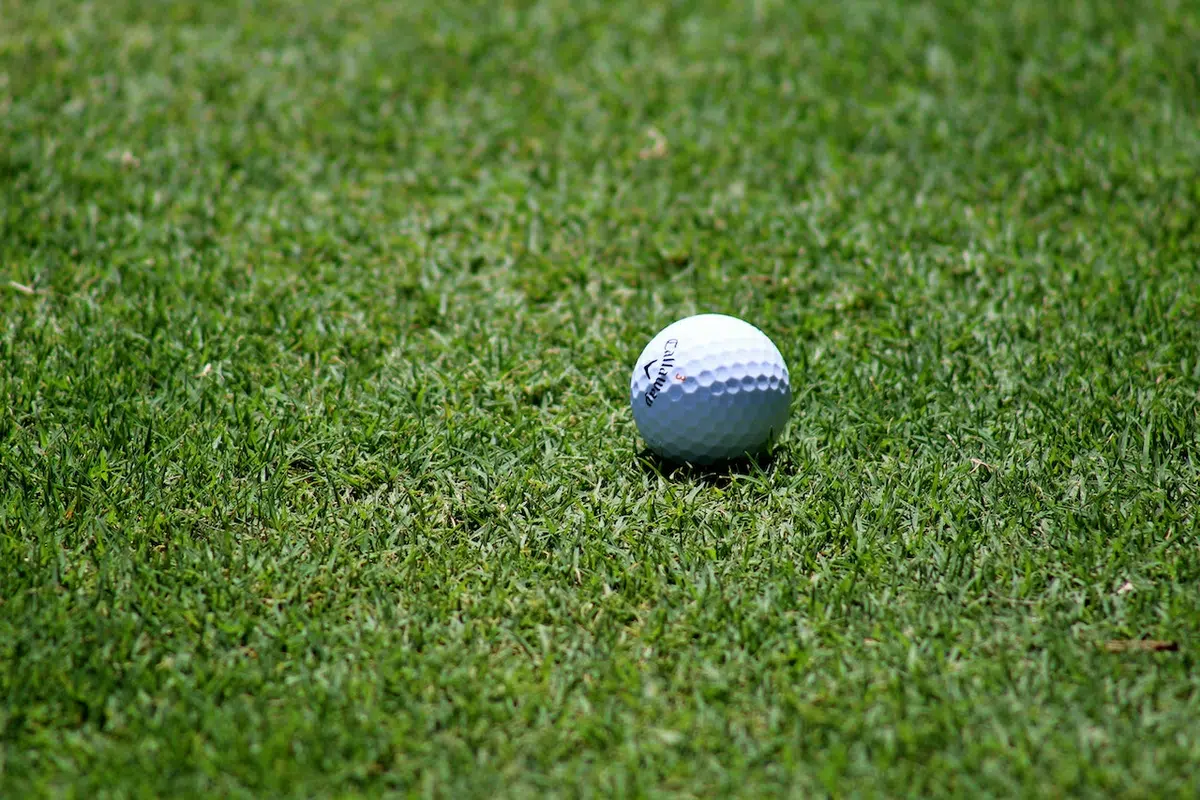
While the modern-day golf ball has its advent in the Haskell era, it has been characterized by innovative additions, replacements, and experimentations to find the next big thing in the golf world.
The balata sap material used for covers has since been replaced with newer more efficient materials such as Surlyn and Urethane. The dimples also got refined and calculated down to the exact shape, placement, and number on each ball.
At the same time, the modern era is characterized by adding multiple layers. This means that different balls can be suited for particular types of players and varying ball flights.
The modern-day ball is superior in speed, control, resistance to weather conditions, and durability compared to any of its predecessors. The pure white or colored casing also makes them easier to find, even by the wrong person sometimes.
Wrapping Up the Inside of Golf Balls
So, now you know what’s inside golf balls, including the types of core, layers, and covers are available.
For beginners, you can stick with the two-piece golf balls, which are good enough and less expensive.
Most golfers will want three-piece golf balls because they’re soft and offer control. If you need more spin, then try the four-piece golf balls.
Related Reading: Why do golf balls have dimples?
Chris's love for golf is only rivaled by his wanderlust. A globetrotter at heart, He’s played courses throughout Europe and Asia and at home in NSW, Australia. With a writing style as smooth as his golf swing, he’ll help you find the right gear to match your skill level and style. You can connect with Chris on LinkedIn.









